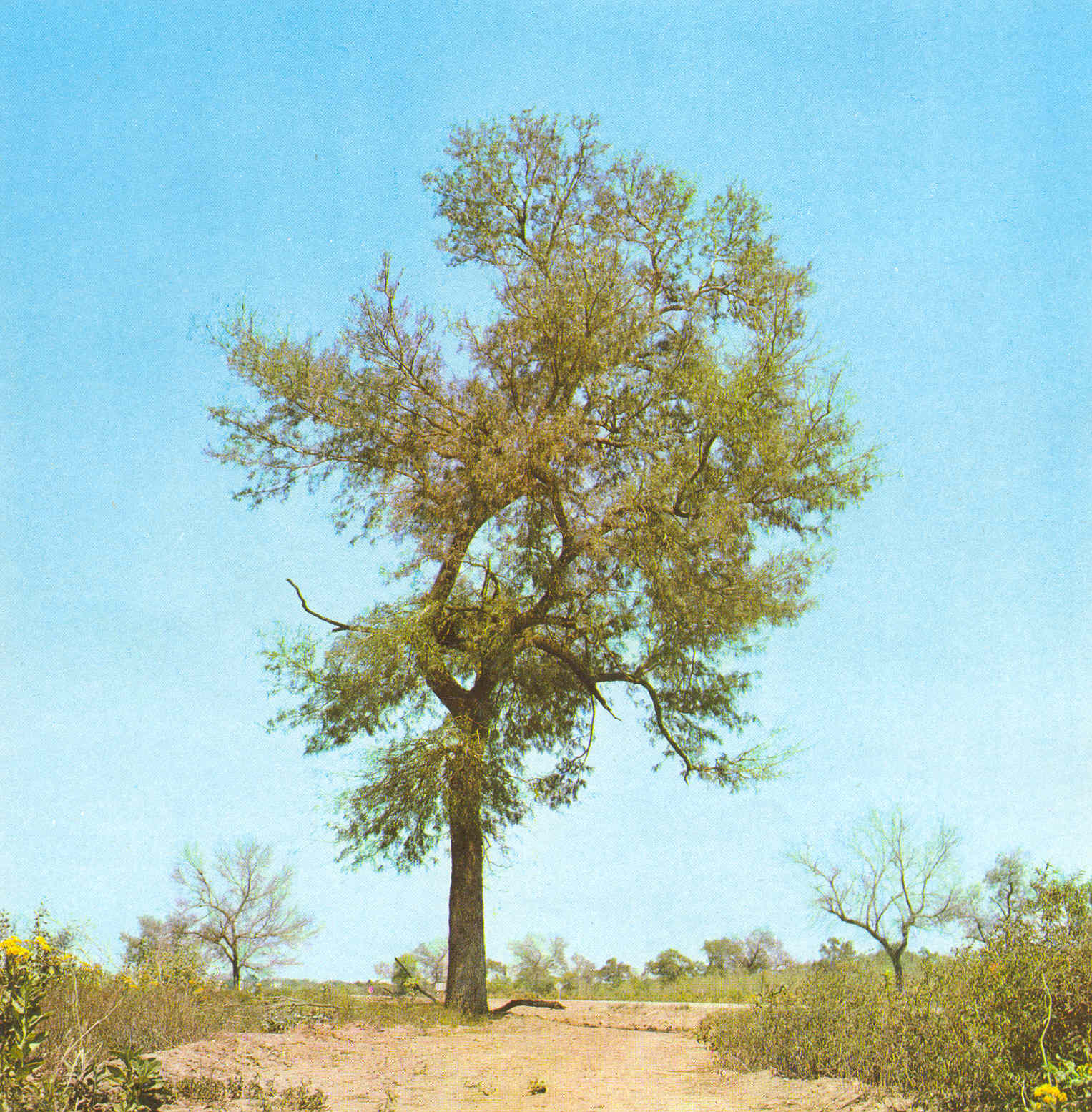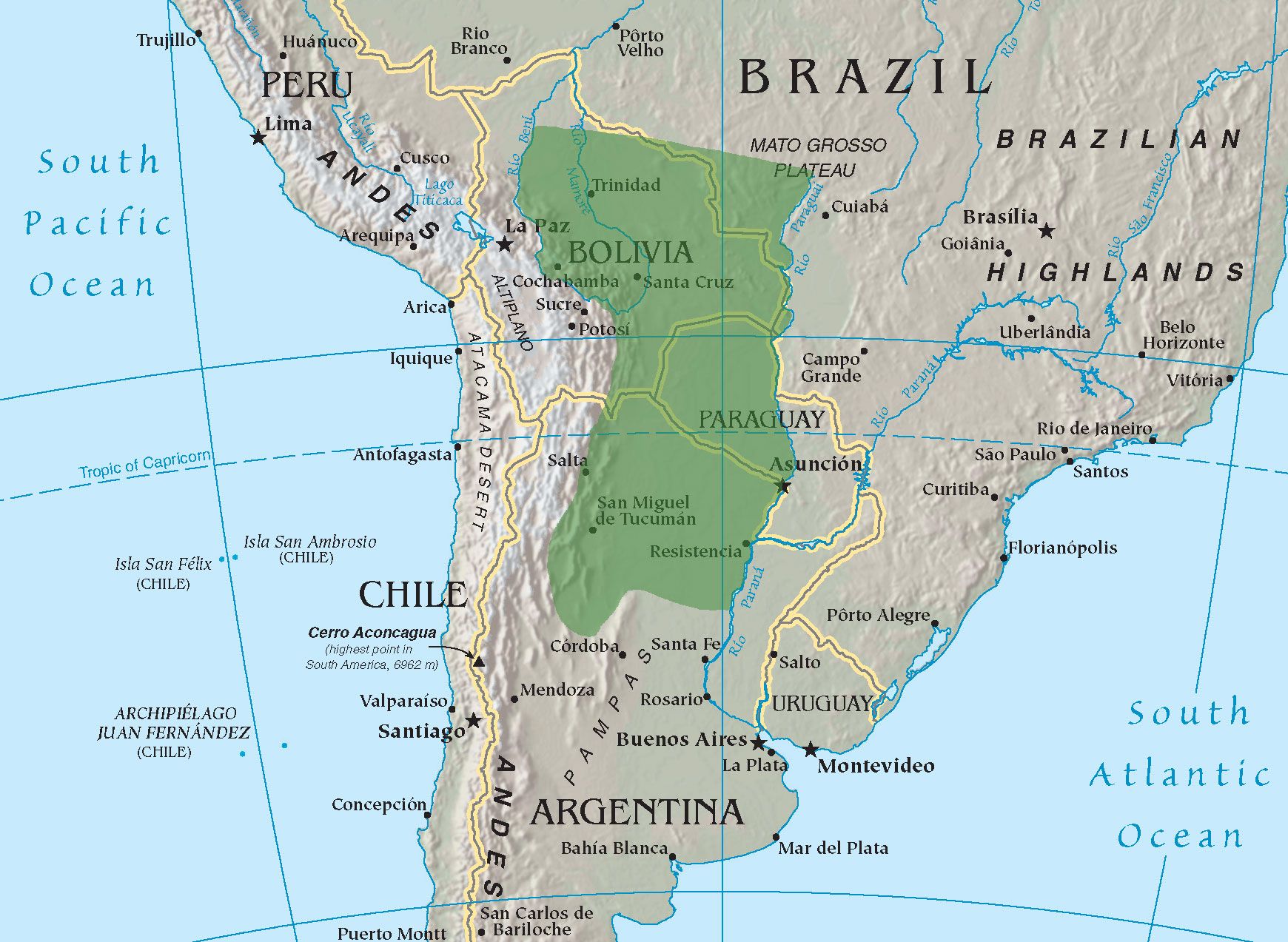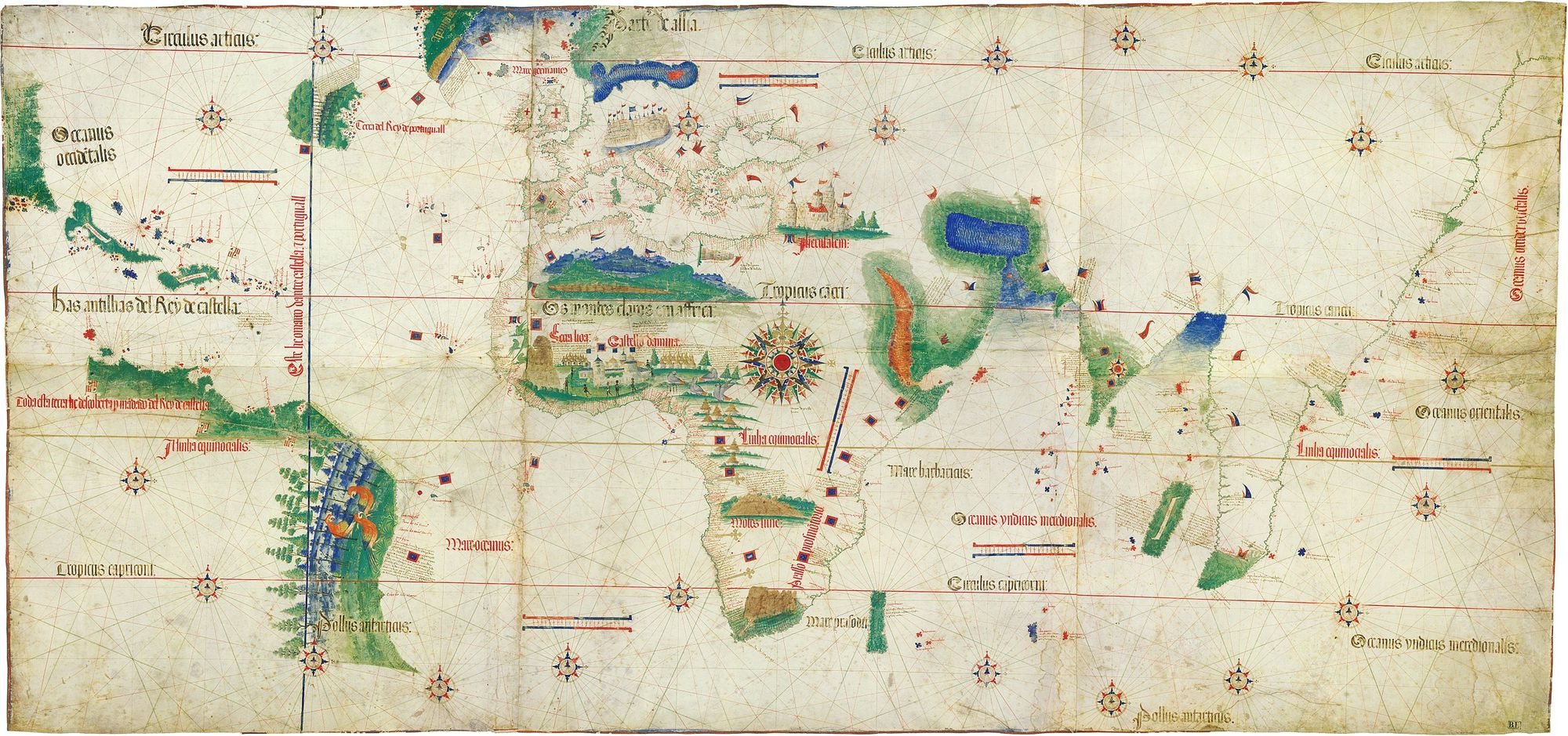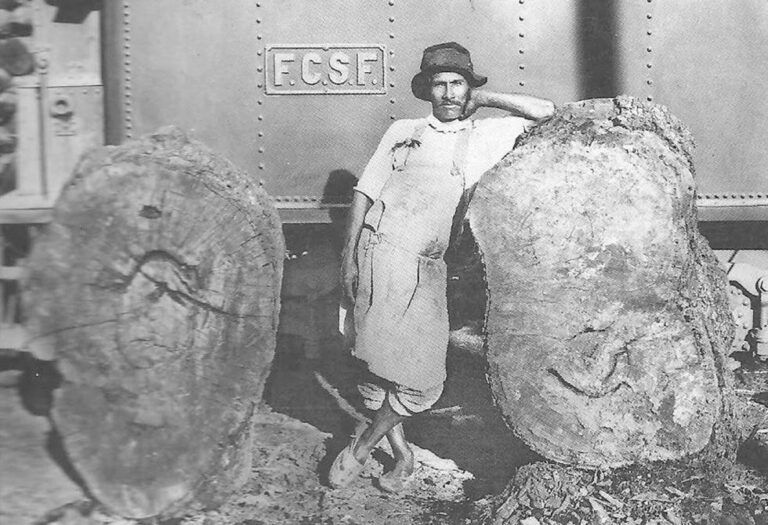
—Have you been with the Quebrachos?
—Yes, I even hugged one—I replied.
—Ah, that’s it then, the Quebracho has hit you. Don’t worry, it will itch for a while; try not to scratch it.
—Why did he hit me?—I asked.
—You probably didn’t ask for his permission, and you got too close; he felt threatened—replied Mario, a local inhabitant of Copo National Park, a protected area in Santiago del Estero, Argentina.

The Quebracho Colorado is a tree native to the Gran Chaco region in South America, an area that comprises Bolivia, Paraguay, Brasil, and Argentina. In terms of biodiversity of the continent, it is the second most important territory after the Amazon rainforest. At the beginning of the 16th century, in the land that now constitutes Argentina, there were about 150 million hectares of forest. During Spanish colonial rule, every forest that was in the vicinity of a large urban settlement was felled to use the wood mostly for construction work, heating, and cooking. Although this brought the forest area down to 100 million hectares by the 1900s, research shows that, until then, the felling did not exceed the annual increase in the masses of trees. From the 20th century onwards, intensive logging activities spread overwhelmingly in the north-east of the country, with the timber mainly destined for the export market, this time exceeding its natural possibilities of regeneration. Specifically, it was the intense Quebracho exploitation that made possible the development of Argentina’s first and most important forest industry. This is the reason why the Quebracho Colorado became Argentina’s national forest tree.

Because its wood is so hard and rich in tannin (a substance employed in the transformation of pelt to leather), the Quebracho was exploited simultaneously for the laying of railway networks in the north of Argentina and for tannin extraction—two key elements for the country’s industrialisation process. The indiscriminate plundering of Quebracho Colorados was carried out, in particular, between 1906 and 1963 by La Forestal, an English company that settled in the Argentinian section of the Gran Chaco and became the world's largest tannin producer. Nowadays, only 4 million hectares of the Gran Chaco forest remain (of which only 30% is protected), and the Quebracho Colorado is in danger of extinction. What does the depletion of quebrachos say about the requirements, conditions, and possibilities of life under modern capitalism?
Fourteen Ninety-two
To understand Argentina’s deforestation and the planet’s current environmental degradation, we need to think of them in terms of how extractive regimes work from and within our current globalized capitalist world-system—a global matrix of dispossession that began to form with the colonization of America, in which “nature” and “civilisation” became mutually exclusive.
In 1494, following the return of Christopher Columbus from America, the governments of Spain and Portugal claimed ownership of the newly “discovered” continent and drew a vertical line across a world map to distribute it among themselves. This very act of global territorial partition not only made official the beginning of a new world order, but it set in motion a specific model of power that sought and served to legitimise European colonial expansion, domination, and pillaging of the continent.

Peruvian Sociologist Anibal Quijano identifies three fundamental and interrelated elements of this model of power that is still ongoing and acts over all aspects of life. He calls this the “coloniality of power:” (1) the invention of “race” as a social category and the fundamental criterion for the social classification of the world population that self-positions Europeans as “naturally” (i.e. racially) superior to everyone else, (2) world capitalism as the new structure for the control of labor, its resources, and products, and (3) Eurocentrism as the hegemonic universal rationality that would help naturalise this whole fiction as “a civilizing mission.”
“The rhetoric of Eurocentrism is thus one of salvation: Europeans are the most advanced (the ‘saviors’) and, by opposition, the rest of the world—which belongs to the ‘past’ in the progress of the species—is in need of salvation.”
Coloniality split Latin America into two clearly differentiated historical linear spaces with their own identities: “modern” as a signifier for capitalist relations and “pre-modern” or “primitive” to signify any other way of being in and relating to the world. Under this premise of an evolutionary conception of social reality, development is conceived as the path towards modernisation (i.e. civilisation of the primitive). The rhetoric of Eurocentrism is thus one of salvation: Europeans are the most advanced (the “saviors”) and, by opposition, the rest of the world—which belongs to the “past” in the progress of the species—is in need of salvation.
For centuries, the Gran Chaco was the geographic embodiment of both Indigenous resistance to European domination and, from the perspective of the colonisers, an untamed nature in need of civilisation. Until the end of the 19th century, the Mocoví, the Toba-Qom, the Pilagá, the Wichí, the Chorote, the Chulupí, the Tapieté, the Chané, the Chiriguano, the Vilela, the Lule, the Tonocoté, and the Abipón defeated every attempt of the Spanish and Portuguese to colonise their region. In so doing, they managed to preserve the autonomy and control of the land they inhabited. However, the declaration of independence in 1810 and the following institutional organisation of Argentina as a modern-state enabled the further—now rebranded though equally brutal and illegitimate—colonial expansion of the newly formed republic through national military campaigns. And so, after the occupation of the land, came the erasure of the people and the environment through progress and development.
Within this discourse, industrialisation emerged both as a mediator of the relationship between society and nature and as the most effective way to take “peripheral” societies out of their “postponement.” On a global scale, regions in the so-called periphery engaged exclusively with the production of primary goods for export through the exploitation of non-renewable natural resources (an enclave economy). In the Gran Chaco region, the main activity would be that of tannin production and the sole beneficiary: La Forestal.
A State Within a State
La Forestal was an English company that settled in the territory from 1906 to 1963 between the south of the Province of Chaco and the north of the Province of Santa Fe. They monopolised the exploitation of the Quebracho Colorado tree, thus controlling the world tannin market.
The story begins with a debt that the government of the province of Santa Fe contracted with the English firm Murrieta & Co. The aim was to create the Bank of the Province of Santa Fe and begin the installation of railways. However, the loan was not repaid on time, and in 1880, a law was passed stating that two thirds of the debt would be paid with the proceeds from the sale of public lands at a price of $1500 per square league. As a result, Murrieta & Co. took over 2 million hectares of Quebracho-covered Chaco forest (the world’s largest tannin reserve) and then sold it a year later to the Santa Fe Land Company Limited at more than three times the original price. This company would then merge into The Forestal Land Timber and Railways Company Limited a.k.a. La Forestal, a company of French, German, and English capital registered in London (which itself is a result of the merger of two other companies). After several more mergers, La Forestal became the absolute dominant player in the production and distribution of tannin nationally and internationally.
In the words of historian Gastón Gori, author of the book La Forestal, the company functioned as a sort of “state within the national state:” a social regime under the protection of the national and the provincial governments. The company had nine tannin factories, founded numerous villages, owned and laid 400km of railways in order to push the exploitation frontier further, and had as many as 20,000 employees.
A strict hierarchy divided labourers (woodchoppers, polishers, carters), factory workers (cooks, sawyers), and administrative workers in terms of housing, salary, and work treatment. Labourers would live in self-made temporary settlements inside of the forest, subject to quebracho depletion, while white-collar employees lived in English-style residences and had access to sports clubs and golf courses. Furthermore, labourers and factory workers’ salaries were paid with promissory notes (in the form of coins and papers) to be redeemed for food and supplies at shops and stores that belonged as well to La Forestal.
A police force called the Gendarmería Volante and a para-police force called the Liga Patriótica Argentina were put in place to control and discipline workers. Both were financed by La Forestal, but the officers’ weapons and uniforms were provided by the government. In January 1921, la Gendarmería Volante and the Liga Patriótica tortured and killed 600 strikers in one of the greatest workers' uprising of Argentinian history.
One hundred years after this brutal repression, the communities of the forest villages gathered at the Encuentro por la Memoria, la Identidad y la Reivindicación de los Pueblos Forestales (The Meeting for the Memory, Identity, and Vindication of the Forest Towns) to remember the past and to inaugurate the monument to the first general secretary of the Sindicato del Tanino (Tannery Union) Teófilo Lafuente, one of the leaders of the uprisings. Historian Alejando Jasinski reflects, “This is not a commemoration of violence, which does not allow for the projection of a society, [but rather of] the right to disobey in such opprobrious circumstances, which was so closely linked to the value of the dignity of those at the bottom.”

La Forestal's profits during the years it operated in the Gran Chaco territory were extraordinary. According to a 1916 balance sheet, the company paid the province 300,000 pesos in taxes, while in the same year it paid the British Empire the equivalent of 9,000 million pesos in taxes—ten thousand times more. The reforestation of Quebrachos during this period was null. Eventually, after having felled almost 90% of the forests in the region, La Forestal closed all its factories and, with the accumulated profits, moved its production to South Africa—where it would, in turn, exploit the Mimosa tree; there, Apartheid laws promised an even cheaper labour force and even fewer controls.
A tree is a Forest is a World
But this is not the only story of the Quebracho Colorado. The short dialogue above is part of the experience of an archaeologist working in the Copo National Park, a protected area in Santiago del Estero, where it is known that before approaching a Quebracho tree, one must salute him (“Buenos días, Señor Quebracho”). The salutation is not only an acknowledgement of his presence but also a form of asking for permission to be physically close to him. Quebracho trees can deny permission by “shooting” the person with a heavy rash that makes their body itch. Locally, this skin irritation is called by its name in Quichua “páaj.” According to local tradition, the way to cure this rash is to go back to the Quebracho tree, offer him a cake of ashes as an apology, and tie a red thread to the trunk as a sign of respect and declaration of friendship.
In northern Argentina there is a widespread story about Puca Sonko (red heart), a Quichua Cacique (warrior) who died defending his tribe from the armies of the Viracochas (name given by the Quichuas to the Spaniards) that came from the north to take their land. While bleeding to death after winning the battle, the Cacique lies on the trunk of a Quebracho Blanco (White Quebracho). His blood enters the tree through a hole and replaces the tree's sap, while his soul is transferred to the tree. This is how the Quebracho Colorado was born, and the virtues of the brave warrior are reflected in the hardness of its wood and the ability to defend and attack by means of the “flechazo” (shooting of an arrow).
“[Trees are] communicative, relational beings, capable of enforcing or denying consent. They are part of the memory of a people and transmit their values and ways of relating to each other and to Nature.”
These stories speak of understanding trees as subjects: as communicative, relational beings, capable of enforcing or denying consent. They are part of the memory of a people and transmit their values and ways of relating to each other and to Nature. These popular and collective knowledge manifestations that circulate through oral channels are formed through time, space, and complex social networks. Though many, the Indigenous peoples of the Gran Chaco share certain common features in their cosmologies, such as a deep interrelation with Nature. To communicate with animals, plants, rivers, and soil is a practice that has existed for millennia. It is not about a lack of knowledge; rather, it pertains to understanding which kind of knowledge surfaces with regard to plants and nature and how to relate to them. It is not that trees cannot communicate; the voices of the Quebrachos as well as their material presence (through deforestation) have been destroyed. When a tree is cut down, it is not only the tree that is destroyed but a whole way of relating, an ontology.
Coloniality is maintained through a relation of control and exploitation of nature. This produces a double movement of destruction: an onto-epistemic destruction of nature as a collective subject and the material destruction of nature through extractivist practices. The result is the destruction of the whole sphere of existence (which includes the sphere of knowledge) of those colonised for whom Nature is, simply put, life. Colonial knowledge is founded on the very erasure of Indigenous knowledge.
“When we talk about the transformation of trees into railway tracks and tannin, we are not only talking about the destruction of a forest but the destruction of an entire world and its cosmology.”
So, when we talk about the destruction of Nature, what is actually being destroyed? It is not only the material space, the land—understood as the territory that people inhabit—that is destroyed, but the destruction of the territory in which relationships and knowledge is formed; the territory is understood as an interrelational place for the production of life, of a vision of the world. The material and the immaterial are mutually constituted and constituent of a world. Thus, when one encounters a Quebracho, one does not merely encounter and interact with a tree but with a whole belief system and a way of relating (a cosmological ontology) that Western rationality not only cannot capture but actively seeks to destroy. Then, when we talk about the transformation of trees into railway tracks and tannin, we are not only talking about the destruction of a forest but the destruction of an entire world and its cosmology.
One No, Many Yeses
For the past 30 years, the expansion of the agricultural border in Agentina’s Gran Chaco forest has been devastating. This time, trees are razed not for their use but to clear the land for the subsequent cultivation of soya through bulldozing and indiscriminate fires.
Until 1980, there were about 40 thousand hectares of soybean crop, a number that went up to 20 million hectares by 2018. Since the introduction of genetically modified seeds (the ‘RR’: Roundup Ready seed) and glyphosate in 1996, soybean began to dominate the agricultural production market, making it the country's main crop. The final destination of practically all of Argentina's soya production (in the form of soya beans, soya oil, and soya meal) is the world market, which is equivalent to 25% of the country's total exports—a market that is mainly operated by a handful of giant conglomerates and landowners.
“The bulldozer sweeps away everything without asking for permission to the land or its peoples and leaves it as a blank, scorched soil. Erasure is the first step to later install the ‘civilization.’”
In the forests of the Gran Chaco live historically Indigenous and peasant populations who, despite being the original occupants and workers of the land, have not managed to obtain title deeds to their lands, making it very easy to evict them through violent processes for the following sale of the land. Even after the “Ley de Bosques” (Forest law) passed in 2007 that regulates the use of the country’s forestland into protected, mixed, and available-to-deforest areas, illegal clearings continue in supposedly protected areas marked as untouchable.
The bulldozer sweeps away everything without asking for permission to the land or its peoples and leaves it as a blank, scorched soil. Erasure is the first step to later install the “civilization.” The colonial project imposed from the global north through the discourses of modernisation and development brought devastating environmental and social consequences at the cost of the destruction of the South. Herein lies the idea that if there is a forest, there is nothing; if there is technique, there is progress—and the railways and bulldozers at the service of this process. Unsurprisingly, in the ranking of deforestation, the countries that are in the first 10 places all belong mainly to South America and Africa.
To speak of a tree’s capacity for consent, to center them politically as capable of giving or denying permission, is to talk about the distribution of decision-making toward what we consider Nature. This means taking land sovereignty seriously for those whom trees are not a mere resource but a relation of survival. To defend Nature, then, needs to be fundamentally about defending the right of land of Indigenous and peasant communities.
“The alternative to decolonise these democracies and these states is to understand the sense of complementarity and what we call the concept of Buen Vivir, where there are not only human rights, but also the rights of Nature.”—Liliana Claudia Herrera Salinas
Liliana Claudia Herrera Salinas, Indigenous leader from the Huarpe Nation in the province of Mendoza and the vice-President of the Organisation of Indigenous Nations and Peoples in Argentina (ONPIA) explains: "We have been making demands [...] in the sense of a broader democracy: participatory, communal, and collective democracies towards plurinational and pluricultural states [...] moving away from those mercantilist states—extractivist of life itself—whose central focus is the human being […] understanding that our Mother Earth is not private property, but it is where all forms of life inhabit. The alternative to decolonise these democracies and these states is to understand the sense of complementarity and what we call the concept of Buen Vivir, where there are not only human rights, but also the rights of Nature.”
The Zapatistas were the first to collectively and firmly adopt the politics of “Un solo no, un millón de síes” (a single ‘No’ and a million ‘Yeses’): a radical rejection of neoliberal policies, extractive globalisation, and world capitalism; whilst recognising and encouraging the real plurality of the world and the diversity of cultures and ideals of life. And so, from Mexico to Argentina, what is spreading is not only the single rejection of the globalised Eurocentric capitalist world-system but also a collective affirmation of multiple possibilities of existence. This is not the denial of a world but rather, the possibility for the creation and coexistence of many.
Franca López Barbera is an Argentinian designer, researcher, and curator based in Berlin. She studied Industrial Design at the University of Buenos Aires and did a Master of Science in Design Research at the Bauhaus in Dessau. Her work explores the intersection between nature, coloniality, gender, and ethics. Her current research builds on the introduction of consent in design-nature relationalities against extractive regimes. Prior to this, Franca has straddled several professions, working with various design practices, art studios, non-profits, and academic institutions. She is currently curating the Argentinian pavilion for the 2021 London design Biennale.
This text was produced as part of the Troublemakers Class of 2020 workshop.
Title image by Sara Díaz












